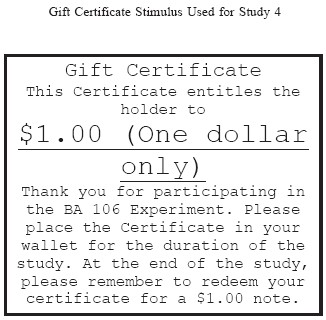This applies for your shopping on Amazon or going out to have a romantic dinner date. Don’t leave home without means you will spend more than if you just have cash. If you are on a tight budget, using cash is the best way to cut your expenditures, research confirms.
This resarch article examines consumer spending as a function of payment mode both when the modes differ in terms of payment coupling (association between purchase decision and actual parting of money) and physical form as well as when the modes differ only in terms of form.
Here is what it means in plain English – the study did four separate laboratory studies with undergraduate students majoring in business to find out a few things about what makes us spend more versus less money:
- Study 1 demonstrates that consumers are willing to spend more when a credit card logo is present versus absent.
- Study 2 shows that the credit card effect can be attenuated when people estimate their expenses using a decomposition strategy (i,e. please estimate how much each item will cost and then add them together to get the total amount – detail makes people cautious = they spend less) versus a holistic one (just estimate the total amount based on the items below – people guess = less cautious and spend more).
- Study 3 demonstrates that consumers spend more when they are spending scrip/gift certifacte type of money (a form of stored value certificate – like a gift certificate) versus cash of the same face value.

Study 4 shows that the difference in spending across payment modes (cash and gift certificates – see the one to the left) is attenuated by altering the salience of parting with money through contextual manipulations of the differences between cash and gift certificates (you are reminded that you will have to pay now – will you want to give away the voucher … well). Nevertheless, results for Study 4 were not clear cut – authors suggest this could be due to small sample used.
Overall, the studies incidate that the more transparent the payment type, the greater the perceived pain of letting one’s money go. In turn, the more careful people are.
An alternative download is available here:
Alternative download from American Psychological Association
Paying by cash cuts amount being spent by students. However, there may be some variables that could moderate the results, such as:
1) these were U.S. university undergraduate students, attending courses being taught in the business faculty on two different campuses – older US folks or people in other countries might act differently,
2) laboratory studies were used, whereby subjects participated in order to receive partial credit for their course; if we assume 85-100 points are required to get an A or an A+ grade for the course, participating in the study is 5% of the 100 total points one can get; hence, getting a 100% out of 5% or getting 5% as a bonus on top of whatever else one can get to achieve a passing grade for the course are easy points for weaker students — not explained by researchers in detail, nevertheless, could this affect how much we can generalize from the findings?
What it means for e-commerce
Regardless of the above two and possibly other issues that would warrant discussion, the four studies presented in this research paper are great reading.
The less transparent the transaction (e.g., credit cards and gift vouchers) the more willing are people to part with their money. The more transparent (list of items each with costs associated, pay with cash) the less eager students part with their money. Hence, providing easy to understand lists and numbers explaining how much it costs to eat at a restaurant or order these books makes people more cautious.
To create trust and confidence, online vendors are advised to make it easy for users to be given an itemized bill. As well, making the removing of an item easy in order to lower one’s total bill if so desired is a smart strategy. While this might lower your sales today, a happy customer that does not wake up tomorrow worrying about the outstanding credit balance is likely your to become a repeat customer. Repeat customers are the most important one’s for your bottom line.
So make first time customers repeat customers by keeping them happy and, most importantly, providing them with itemized billing and a procedure that makes it easy to remove items to adjust the total amount due.
Pingback: WhitePapers